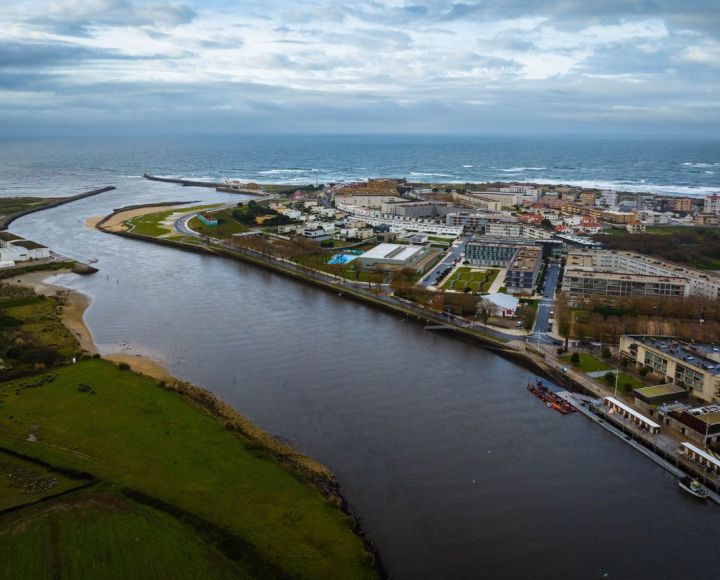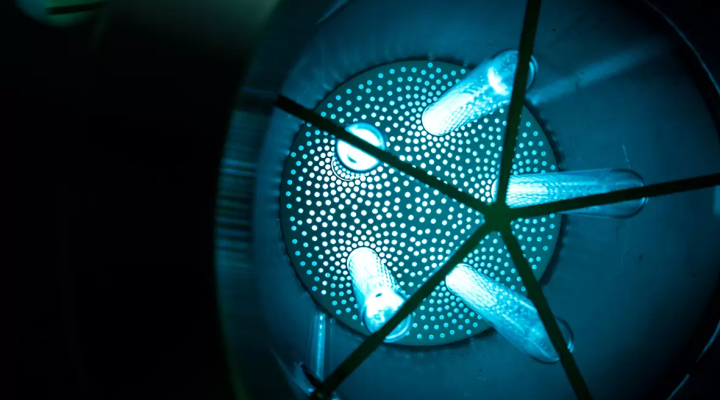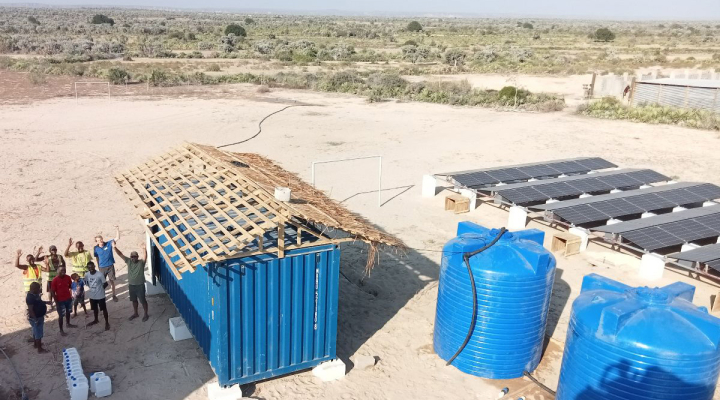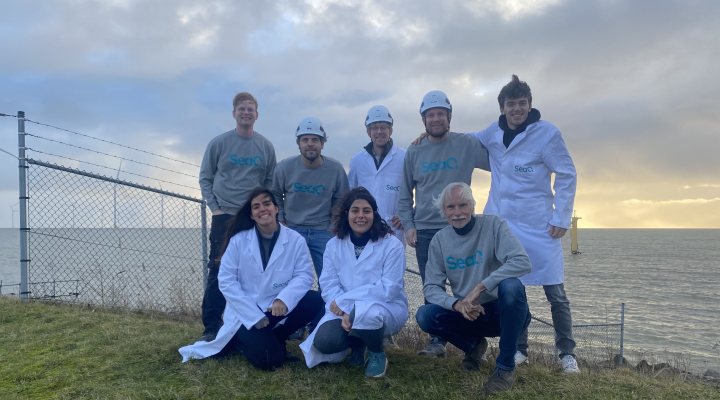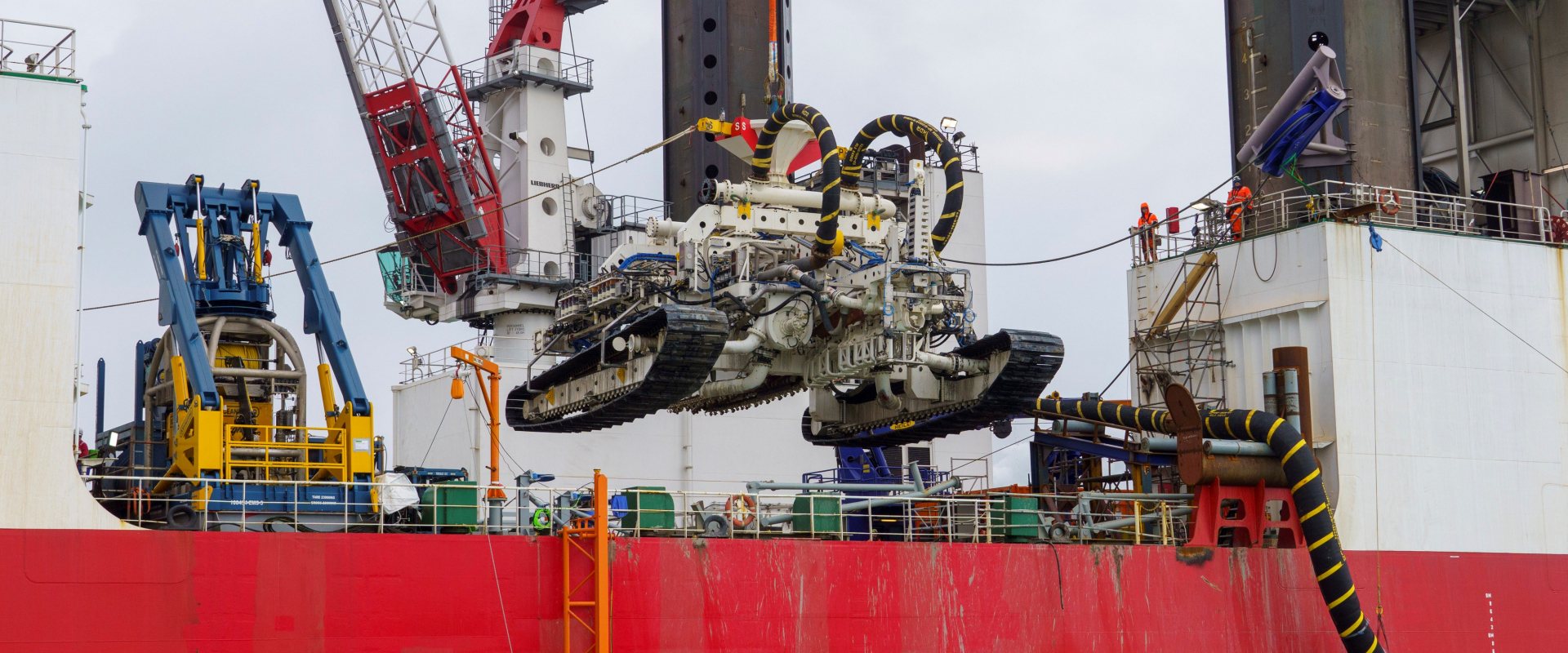
Huge trencher to bury wind farm cables 5 metres below seabed
The Van Oord-Hellenic Cables consortium conducts their final tests to bury electricity cables from off shore wind farms more than 5 meter into the seabed, using a Tracked Remotely Operated Vehicle (TROV). Whether the new trencher delivers on all fronts is tested in the Rotterdam harbour. The first electricity cables are expected to be buried in the North Sea in July.
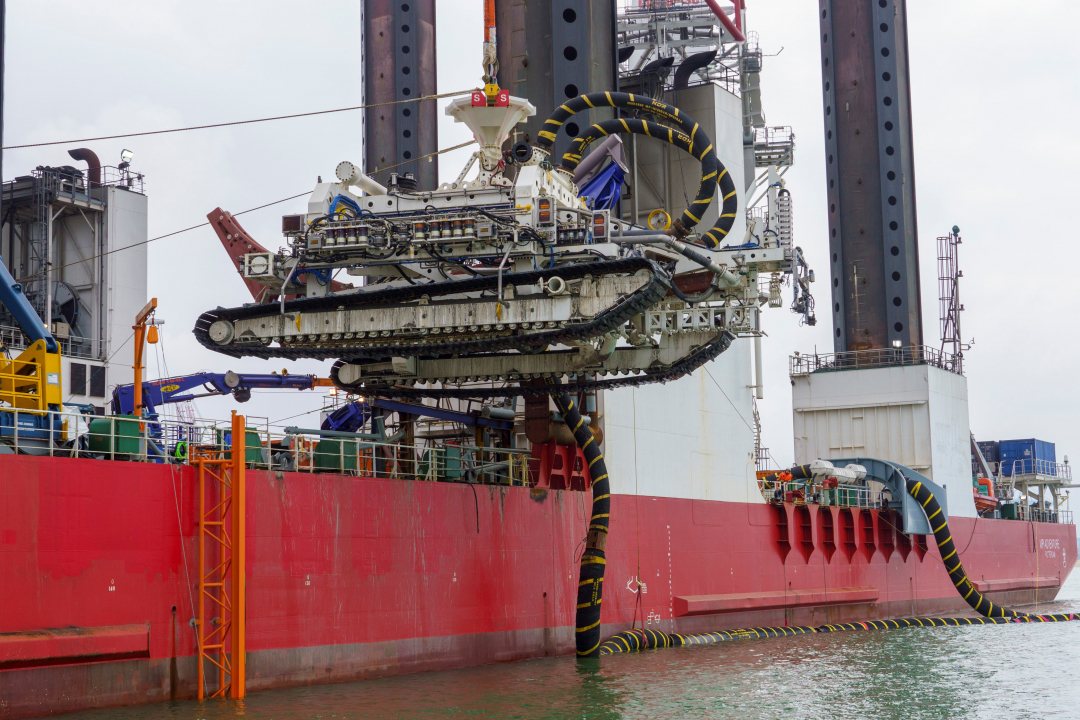

Deep dig-it
The Deep Dig-It vehicle travels unmanned over the seabed, creating a deep trench while simultaneously inserting the cables and then closing the trench. Special about this new trencher is that it is the largest and most powerful machine in its class. It has an installed power of 2,500 HP, making it possible to bury cables into very dense soils.
Next to the immense power, the depth that can be achieved by the trencher is well over 5 metres. The Deep Dig-It will be controlled from Van Oord’s offshore installation vessel MPI Adventure, which is equipped with a heavy-duty crane that launches and recovers the Deep Dig-It into the sea.
First four cables
The first four cables to be buried by the Deep Dig-it vehicle are for the Hollandse Kust wind farm project, 22 km off the Dutch coast. The cables have to be buried more than 5 metres into the seabed for the first ten kilometres of the offshore cable route, as to be able to cross the busy shipping lane to the Rotterdam harbour.




